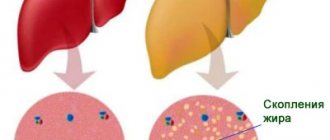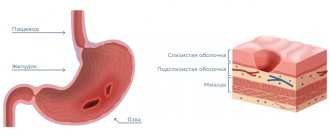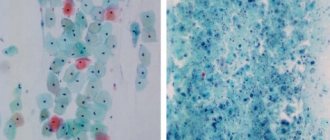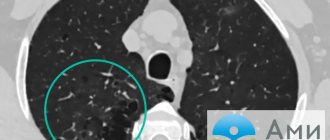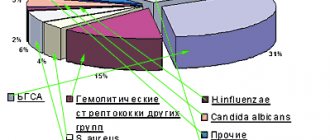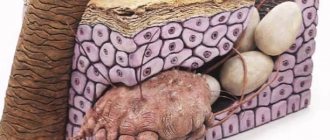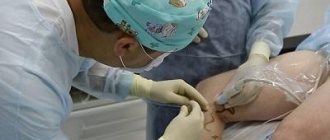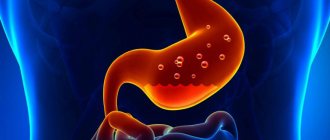“Faty liver” is a disease that is characterized by excessive accumulation of fat in the liver cells.1 This disease has several names - fatty liver, steatosis, fatty degeneration, but each of them means only one thing - it is not to be trifled with, and its early diagnosis, as well as subsequent treatment, must be timely and comprehensive.
To begin with, it is worth remembering that fatty liver disease can be associated with alcoholic or non-alcoholic liver damage.2 Next we will talk about non-alcoholic damage. Recently, the number of patients with non-alcoholic fatty liver disease (NAFLD) has increased significantly. Thus, according to statistics, in 2007 NAFLD was detected in 27% of patients, while in 2014 this figure increased to 37%. Thus, NAFLD currently ranks first in frequency among chronic liver diseases.1
When does fat accumulate in the liver, and you don’t know? Unobvious risk factors
Few people go to the doctor feeling healthy. Many people don't go, even if they have symptoms. Therefore, fatty liver disease is most often detected by chance, during examination for other diseases.
Who should be careful? Those at risk for fatty liver disease are those who:
- They adhere to strict diets or have lost weight suddenly and quickly . The patient loses weight, enjoying achievements and reflection in the mirror, and the liver accumulates fat.
- They eat food high in fast carbohydrates and unhealthy fats - and the body needs more insulin, the pancreas produces it in excess, and insulin increases the accumulation of fat in the liver.
- They suffer from type 2 diabetes - again, due to the fact that there is a lot of insulin in this disease, it causes the liver to accumulate fat. And other hormonal disorders, for example, a lack of thyroid hormones, also affect the liver.
- They take medications for other reasons - for example, many contraceptives cause fatty liver. The “black list” includes some antibiotics, arrhythmia drugs, antitumor drugs and many other drugs.
From fatty liver to diabetes - one step
And yet, the “champions” in terms of liver risk are those who are obese. In this condition, more free fatty acids enter the liver and are stored in the liver cells as fat. Cells lose sensitivity to insulin, which becomes more and more abundant, a breakdown occurs, and diabetes develops.
Do you like to relax with a glass of alcohol? Fatty liver on the horizon
Alcohol is metabolized into fat, which is stored by liver cells. Then the cells become overfilled with fat, do not receive proper nutrition and die. This is also the cause of cirrhosis in those who “use.”
Symptoms
The danger of non-alcoholic hepatosis is its asymptomatic course. The disease does not manifest itself in any way until the damage to hepatocytes becomes serious. At stages when the process is reversible and treatment does not require serious efforts, fatty liver degeneration has no symptoms and can only be diagnosed by consulting a doctor.
As hepatosis develops, symptoms appear:
- decreased performance, fatigue, frequent weakness;
- a feeling of discomfort or heaviness in the hypochondrium on the right side, gradually turning into pain;
- loss of appetite or attacks of hunger with rapid satiety when eating;
- nausea and then vomiting, which becomes regular, contains bile;
- the skin, mucous membranes, and whites of the eyes may acquire a yellowish tint;
- itching of the skin may occur;
- immunity gradually decreases, a person suffers from colds more often.
What kills a patient with untreated fatty liver: heart attack or cirrhosis?
Fatty liver disease, as fatty liver is also called, is combined with the deposition of fat on the walls of the arteries, and, as a result, accelerates the development of cardiovascular accidents. If fatty liver disease is not treated, it turns into fibrosis, when connective tissue, in other words, a scar, is formed instead of the “workhorses” - liver cells. This is how cirrhosis gradually develops. And these are the consequences of loving sweets, fatty foods, strict diets, “relaxing” with a glass of beer in hand or something stronger.
But the liver is an amazing organ, and the process can be reversed if we start paying attention to ourselves in time.
Why is NAFLD dangerous?
Fatty hepatosis, especially at the very beginning, can be practically asymptomatic, and the existing symptoms are not specific and, thus, make diagnosis difficult. However, you should not relax - diagnosing fatty hepatosis is important for any suspicion of the presence of this disease. Because this disease, developing gradually, practically without manifesting itself clearly, nevertheless increases the risk of cardiovascular death several times - in other words, it increases the risk of developing strokes and heart attacks.4 In addition, advanced fatty hepatosis can ultimately lead to ultimately, to the development of cirrhosis and liver failure. The likelihood of this event is low, however, if it occurs, the consequences can be fatal. The fact is that cirrhosis usually requires organ transplantation, which can be further complicated in the presence of cardio-metabolic disorders and diseases that often accompany fatty hepatosis.3
Stages of development of NAFLD
- 1
Stage of fatty hepatosis (steatosis)
The initial stage of the disease, often asymptomatic
- 2
Non-alcoholic steatohepatitis
Hepatosis with accompanying inflammation of liver cells
- 3
Fibrosis with further transition to cirrhosis
At this stage, liver tissue begins to be replaced by connective tissue, which leads to disruption of the structure and, ultimately, disruption of the organ.3
How to get rid of liver fat? 5 rules of behavior
Unfortunately, there is no “magic pill” for fatty liver disease. Only diet and physical activity. That's why:
- Limit animal fat - exclude butter, fatty meat, lard, smoked meats, remove the skin from poultry, switch to vegetable oils.
- Limit sweets and starchy foods, love vegetables - only “slow” carbohydrates, up to 100 g per day, instead of sugar - use substitutes, preferably stevia.
- Eat enough proteins, but less red meat - fish, poultry, low-fat cottage cheese, natural yogurt, eggs are best.
- Stop drinking alcohol or reduce the dose to a safe one.
- Exercise 3 times a week for 45 minutes. Every time you exercise, your insulin levels drop for 48 hours and your liver will gradually stop storing fat.
Classification
By etiology:
- primary or secondary. Secondary develops as a complication of other diseases (diabetes mellitus, obesity, hormonal disorders, etc.). Primary occurs due to poor nutrition, genetic predisposition, etc.;
- alcoholic or non-alcoholic. Alcoholic hepatosis appears against the background of regular consumption of toxic doses of alcohol. Non-alcoholic can be caused by any other reasons not related to the toxic effects of ethanol.
By distribution:
- focal fatty degeneration, in which a local area of liver tissue is affected;
- diffuse hepatosis, in which the affected area affects all tissues of the organ.
By stage:
- 0: damage to single hepatocytes or small groups of them;
- 1: the appearance of medium-, large-droplet fat cells that provoke inflammation;
- 2: intracellular obesity of a diffuse nature;
- 3: extracellular obesity, damage to large droplet fat cells, cyst formation.
How can we help you?
Examine . Ultrasound and elastography will show how much the liver tissue has changed, whether there is fibrosis, and the analyzes will make it clear whether there are disorders of fat and carbohydrate metabolism. If ultrasound results reveal fatty liver, the hepatologist will recommend testing for viral hepatitis. Viral hepatitis often occurs under the guise of fatty liver.
The liver does not hurt, fat accumulates unnoticed. Think about it before it's too late. Get examined and make sure everything is ok. And if a problem exists, do not close your eyes to it and seek help. We are ready to help.
Complications
Many people underestimate the danger of fatty liver disease because the disease is not accompanied by unpleasant symptoms.
However, as the disease progresses, more and more hepatocytes change their structure and cease to function normally, which ultimately results in a number of complications. Fatty liver degeneration is dangerous due to the following consequences:
- Fibrosis is the proliferation of connective tissue when liver cells are damaged. It has been proven that this condition is treatable, but only if it is started in a timely manner.
- Hepatitis is a non-infectious inflammation of the liver, which can be either acute or chronic. The acute process most often occurs in people who drink alcohol in large quantities.
- Cirrhosis is a chronic disease that is accompanied by irreversible changes in the liver with a progressive reduction in functioning hepatocytes. The functioning of the liver gradually deteriorates, leading to life-threatening complications.
- Hepatocellular carcinoma is a malignant degeneration of liver cells (cancer).
That is why treatment should be started as early as possible, until the process of changes is completely reversible. Complex therapy allows you to successfully restore liver function. If you start treatment at the stage of serious disorders and complications, then at best you can achieve a decrease in the rate of their progression, but not full restoration of the organ.
Treatment tactics for patients with NAFLD and metabolic syndrome due to hepatitis C
If concomitant liver damage is detected in patients with HCV as a result of metabolic syndrome (non-alcoholic fatty liver disease - steatosis), it is necessary to conduct additional examination for indicators of metabolic and hormonal disorders characteristic of this disease.
To assess the degree of liver damage, it is recommended to use a blood test - Fibromax, which makes it possible to separately assess the degree of liver damage by the virus and separately by metabolic syndrome.
Treatment tactics depend on the degree of liver damage as a whole, and separately for each damaging factor. Treatment with antiviral drugs can be started immediately, and further treatment of metabolic syndrome after receiving SVR.
If the degree of liver damage from the virus is significantly less than from metabolic syndrome, it is possible to begin antiviral therapy after treatment of metabolic syndrome.
In cases of concomitant liver diseases, it is necessary to set the goal of treatment not only to obtain SVR, but also to preserve and restore the liver damaged by other pathological factors.
The most important component of successful treatment of NAFLD and fatty liver disease is proper nutrition.
up
Diagnostics
Fatty liver disease is often found in people who are overweight or have insulin resistance (diabetes).
Diagnostics for liver dystrophy are also carried out for people who have systematically consumed or are consuming alcohol. In rare cases, pathology is detected due to a patient’s complaint about liver function. The diagnostic complex, in addition to standard questioning and examination, includes:
- General blood analysis;
- Blood chemistry;
- Coagulogram;
- Blood glucose level;
- Glucose tolerance test;
- Lipidogram;
- Ultrasound examination of the liver;
- Computed tomography of the abdominal organs (with or without contrast) or magnetic resonance imaging;
- Liver biopsy;
- Elastography.
The research results make it possible not only to confirm dystrophic changes in the liver, but also to assess their severity and identify the most likely causes. Diagnosis is carried out by a gastroenterologist or a more specialized specialist - a hepatologist. Only after confirming the diagnosis and identifying the exact causes of the disease, a treatment plan is developed.
Results of treatment of fatty hepatosis
Patient review:
» Dear Bella Leonidovna! Dear Nelly Nikolaevna Tsurikova, Mushinskaya Kira Vladimirovna, girls at the reception, ultrasound diagnostic doctor, thank you all so much for organizing the treatment of my illness. You guys work wonders as a team! High-level professionals and people with a capital “P!” I am grateful to fate that I found your clinic, which really saved my life and changed it 180 degrees. Thanks to your efforts, qualifications and attention, I have become a completely healthy person. I lost 23.5 kg in 9 months, my liver has become a real factory that now works perfectly!
In general, I wish your team all the best. Do not stop! You really do a great job for people, help overcome serious illnesses.
On the eve of the New Year 2021, I would like to wish you health, family joys and love too! with best wishes, your patient from Kazan" >>> - Rustem 12/05/2018
